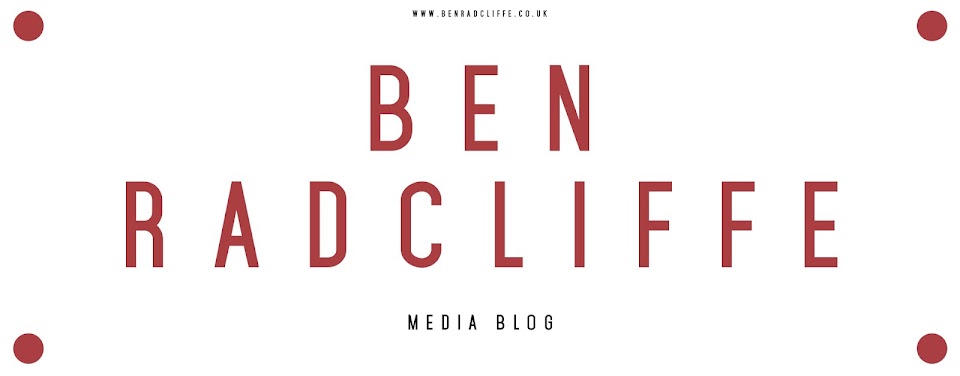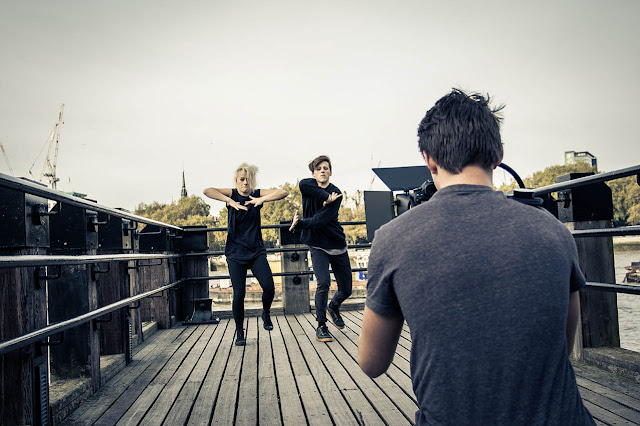My media Products all used, developed and challenged existing forms and conventions of the indie folk genre as well as general conventions of the music video form. By doing this we were able to create a campaign that would be interesting to our target audience.
Simplistic Set design/ low key lighting
A typical convention of the indie folk genre is to have a simplistic set design with low key lighting. This video by Ben Howard shows him and some accompanying musicians playing with the lights only illuminating him and his instruments. This reveals the artist as a performing musician not a commercial artist. As an audience we believe that he cares about his music and according to Richard dyers theory he would be considered an organic artist. The lighting suggests a reflective mood; the singer appears to be thinking internally and expressing the thought within his head. We see him in his own world - represented purely as an artist who cares about his artform.
My music video also embraced a simplistic set design, with low key lighting. Inspired by the conventions seen in videos such as 'The fear' we created a set where the background can not be seen due to the low key lighting. Our set consisted of hanging lightbulbs which change in brightness throughout. The simplistic set fits in with the indie/folk genre, and reveals an artist who's career is led by her music, and not by her 'star image'.
Tracking shots
| James Arthur | Recovery |
| Youth | Tracking shot |
Close up on key line of song
 |
| Youth | Main line of song |
We didn't however ignore the convention of a close up on the artist at other points in the song.
A close up on the singer with direct address is a very common convention. Like adele does we made the creative decision to shoot a CU of our lead singer using direct address in order to strengthen the relationship between artist and audience. Furthermore, we creatively chose to shoot these sections using an 80mm prime lens which gives a faithful, flattering perspective of the artists face, with a soft depth of field. Overall this shot builds recognition for the artist and her beauty, whilst simultaneously revealing her as a meaningful songwriter, and creator of art.
 |
| Youth | Close up |
Dance
According to Andrew Goodwins theory of amplification in music videos, suggests that the images amplify the lyrics often in an exaggerated manor through a narrative. During the research and planning stage we encountered a wide range of music videos that support this theory. A clear way in which this is often done in music videos is through dance. Sia uses dance in her video 'chandelier' features a young girl, frantically dancing her way through various rooms of a seriously dilapidated apartment. The contemporary movement gives the video a manic qualiy, that reflects the theme and pace of the song. It also gives a new perspective, looking at the lyrics through the metaphorical dance allows us to interpret the song in different ways.
 |
| Sia | Chandelier |
We Knew from the start that we wanted to replicate this convention, as we had 2 ideal dancers to play the parts. The dance we collaboratively choreographed was suiting to the pace and storyline of the song. We ensured that this amplification of the lyrics, added new meanings and references. The love story between the two dancers is illustrative of the lyric "The lovers that went wrong", the key line, thus why we chose to focus on the dance during this line; because it focused our viewers on the narrative rather than the band image. This also constructs a representation of our artist that tells an audience they are interested more in art, creativity and talent than constructing a commercial image for themselves. This is conventional of the indie/folk genre.
Indy Album Covers
Before creating the album cover, we did some research into the conventional album covers for indy/folk artists. We noticed from bands such as Ben Howard and the Head and the Heart that the images usually alluded to peace, freedom, and beauty. The artists would not feature themselves at the forefront of the album cover, because they didn't want the focus on themselves they wanted the image to be a reflection of the sound they create in their music. For example in this image by The Head and the Heart they are shown to be lying on the ground in an empty space. This gives a carefree look, and suggests their music has a relaxing sound and vibe. The use of grain, low contrast and earthy colours is very typical of the genre.
 |
| The Head and the Heart |
We intended to replicate this convention in our Album cover. we placed our artists facing away from the camera looking out into the distance from a picturesque viewpoint. The rural scenery was inspired from the conventions of indy folk album covers. We added a grain and a bright purple colour scheme. This colour was used to make the image more stylised and significant.
 |
| My Digipak |
Minimalist Website Layout
Before making the website we took design inspiration from other indy/folk artists' websites. We immediately noticed the repeated convention of simplicity accross all of the websites. Most notably was Ben howards. He utalised a very minimalist style. You are greeted with one of his latest music videos straight away, it is very alternative, The colours are faded to reflect his indie style. Ben Howard is following the Star Theory of letting fans know what he’s about, so the website showing his old school simplistic style, however he is still holding back who he really is leaving a mystery about him. Ben Howard does not feature on the website at all (other than during the four seconds at the beginning), therefore enforcing the mysterious element that he is clearly trying to portray. This following Richard Dyers star theory.
we supported these conventions of minimalism and reveal an interest in the music not the image.






































